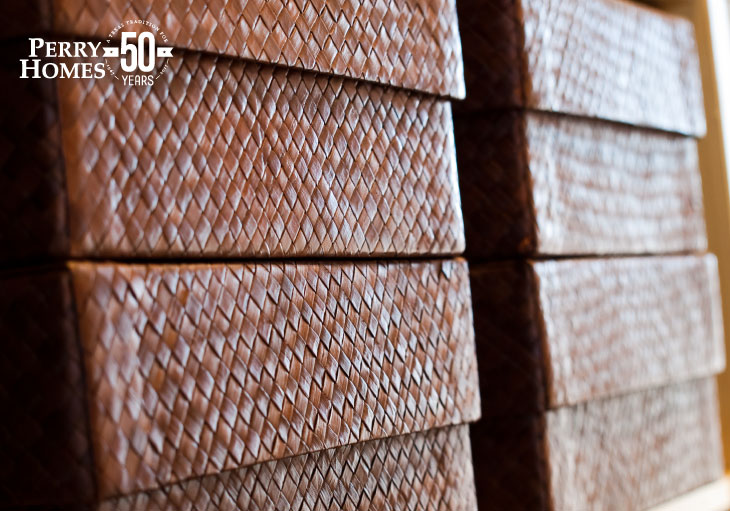
4 Steps to a Better Organized Pantry
Just picture it: you’ve decided to make your favorite recipe after a long day at work. You pick up a few things at the store, and when you get home, you go to the pantry to pull out the basics you know you already have. But you don’t see the flour. After some frustrating rummaging around on shelves, you find it shoved in the corner, buried under an almost-empty bag of chips. If this scenario sounds familiar, it may be time to revamp your pantry organization system. It will help you see what you have on hand to help you visualize meals, making cooking and baking easier and faster.
Clear everything out and clean
To begin, you’re going to need space, so make sure your kitchen is relatively clean. Clear everything out of your pantry and line it up on the kitchen counters. Inspect dates and toss any old or expired food. You should also be honest with yourself about what you will actually eat. If you bought something on a whim but it has remained on the shelf untouched, it’s time to let it go.
Next, take a spray cleaner or dip a cloth into a mixture of water and dish soap, then wipe down the shelves, clearing up any food spills or crumbs that may have accumulated—you may want to use the vacuum hose to get rid of any loose debris before you clean. Make sure to get into all the corners, and vacuum and mop the floor while you’re at it.
Buy bins, baskets, and storage solutions
Once you have the pantry cleaned, it’s time to survey what you have out on the counters and see if there is a better way to store any of it. Are you tired of not realizing you were almost out of something because you couldn’t see inside the box until you reached for it? Consider using clear storage containers for anything from flour and chocolate chips to cereal.
If you have a lot of snack items with bulky boxes that take up a lot of room, look for baskets that can hold individually-wrapped snacks such as granola bars or bags of chips. Baskets are also a great solution for storing bread or packages of crackers or cookies.

With everything out in full view, it’s easier to understand what your personal pantry needs will be. If you have a lot of cans, consider tiered shelves to help you store and locate them more easily. If space is an issue, door racks can provide some much-needed extra room.
Sort shelves by type of food
Grouping food into categories makes a lot of sense for pantries. It means you can store similarly sized items near each other, allowing you to fit things together in a more seamless way. It will also make it easier to find ingredients when they are arranged in sections or zones.
Think logically about placement based on who will be using the items the most. If you have kids, and they are old enough to get their own food, create a kids’ area on one of the lower shelves. You can even further break down this category into sections, such as snacks, breakfast, and items for school lunches.
Other common categories include baking items, canned goods, pasta and rice, bread, chips and snacks, oils and vinegar, drinks, sauces, and more.
Make it work for you
The most vital thing you can do? Make your pantry work for you. Ensure you are utilizing the space to the best of its ability. Don’t count out the top shelves because they’re hard to reach. Store things you don’t need every day: extra rolls of paper towels, kitchen appliances, or fancy dishes for when guests visit.
Decide how you’re going to utilize the floor. Will you use it for trash cans and recycling bins, or is that where you’ll keep the big bin of pet food? Whatever you decide, make sure it is still clear enough that it will be easy to get to things and clean when necessary.
Hang a chalkboard or dry erase board to jot down important reminders or grocery lists. If you have the space, you can even paint a chalkboard wall.
We hope these ideas inspire you to create a pantry that is cleaner and more organized!
